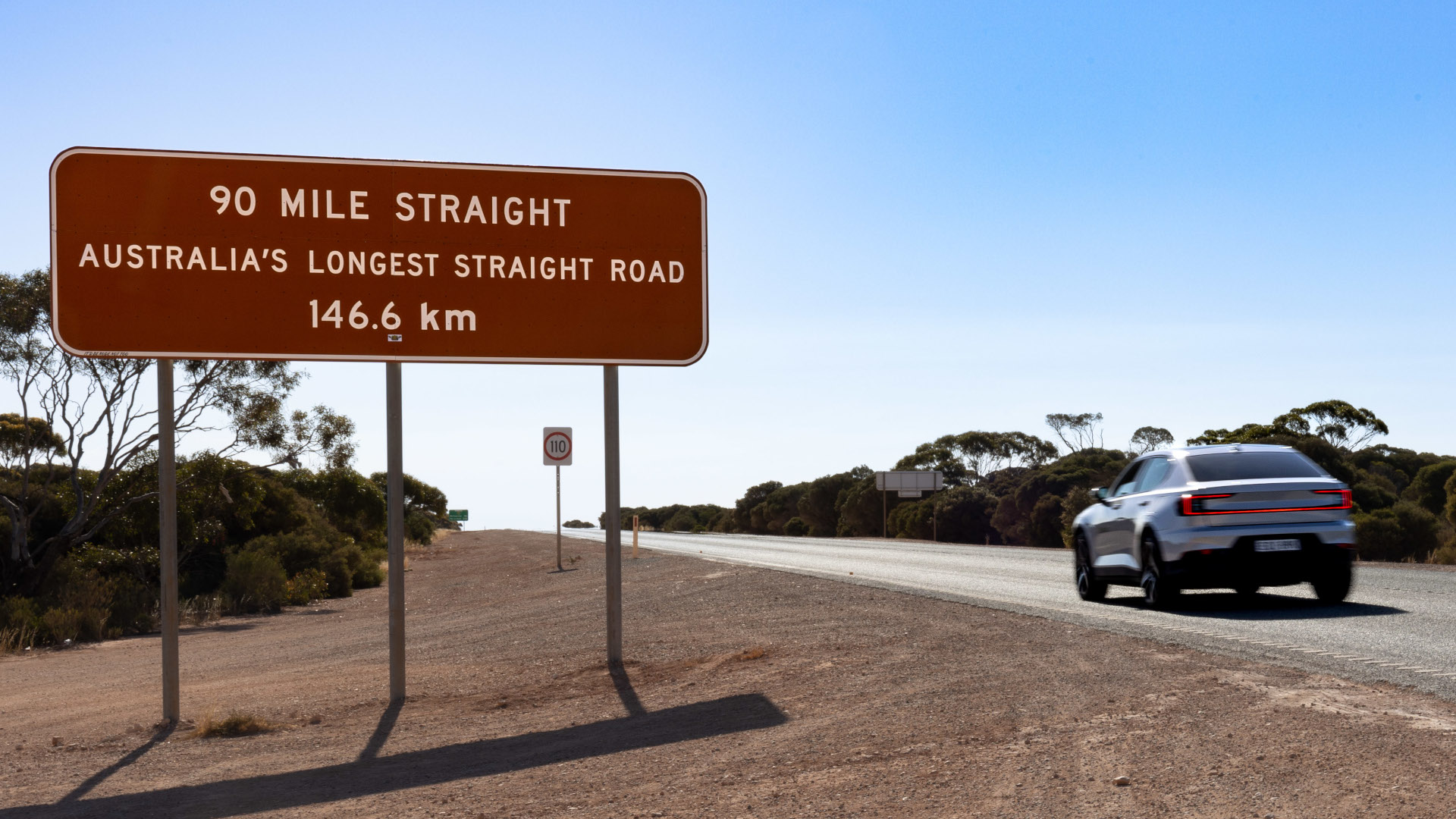

We may earn revenue from the products available on this page and participate in affiliate programs. Learn more ›
Australia is a land of great distances, with its major capital cities all far apart, sometimes with little development in between. Nowhere is this more true than the Nullabor Plain, a stretch of flat, nearly-treeless land stretching for 684 miles between South Australia and Western Australia. It’s perhaps the last place you’d expect to find an EV, but a Polestar 2 recently made the crossing with the help of a new fast charger installed on the desolate route as reported by Drive.com.au.
The roadhouse at Caiguna is the location of the new BiØfil charger, which uses a generator powered by waste cooking oil for fast charging EVs. The invention of retired engineer Jon Edwards, the charger’s reliance on nominally carbon-neutral fuel was a cheaper way to go versus building a solar-powered system, which would have been five times more expensive.

The charger is located at a sort of halfway point, 370 km to the west of the border with South Australia, and 370 km east of Norsemen, a town sitting on the Western border of the plain. Proposed charger networks from the South Australian and Western Australian governments, which hope to be up and running by 2024, have a 720 km gap, which the crowdfunded charger at Caiguna will fill nicely.
The Polestar 2 Long Range Single Motor used in the crossing has a WLTP-rated 540 km of range on a single charge. After charging up at the Caiguna roadhouse with the generator burning old chip fat, the Polestar 2 was then able to drive on to the Western Australian town of Southern Cross, a full 720 km away.


Speaking on the new charger installation, managing director of Polestar Australia, Samantha Johnson, stated that “To turn a waste product into a CO2-neutral charging solution, which connects Australian EV owners from the east with the west, is the sort of ingenuity that has led to so many Australian innovations.”
EV enthusiasts have already visited the charger, as reported by ABC News, with EV owner Nigel Ball showing up for the unveiling in a Tesla bearing numberplates reading “RIP OIL.” It’s a game-changer for the Nullabor crossing, where previously only slow AC charging was available, if that. Ball noted “There’s no way I would have done it before—sleeping in every roadhouse along the Nullabor is not my idea of fun.”

As for ongoing patronage, Edwards notes that “The average number of EVs crossing the Nullarbor over the last five years is five per year.” However, that’s expected to tick up, as Edwards adds “Once these guys know there is fast charging, they will start making plans for trips. I’m expecting that to be 20, or even 40, within 12 months or so.”
EVs have the advantage in energy efficiency, though historically have not been as capable of undertaking long road trips. Detractors often claim slow recharge times and a lack of infrastructure mean that electric cars will never go mainstream. Feats like this one show that those fears are hardly based in fact anymore, and are set to become even less relevant as vehicle range increases and more chargers continue to be installed.
Got a tip? Let the author know: lewin@thedrive.com
